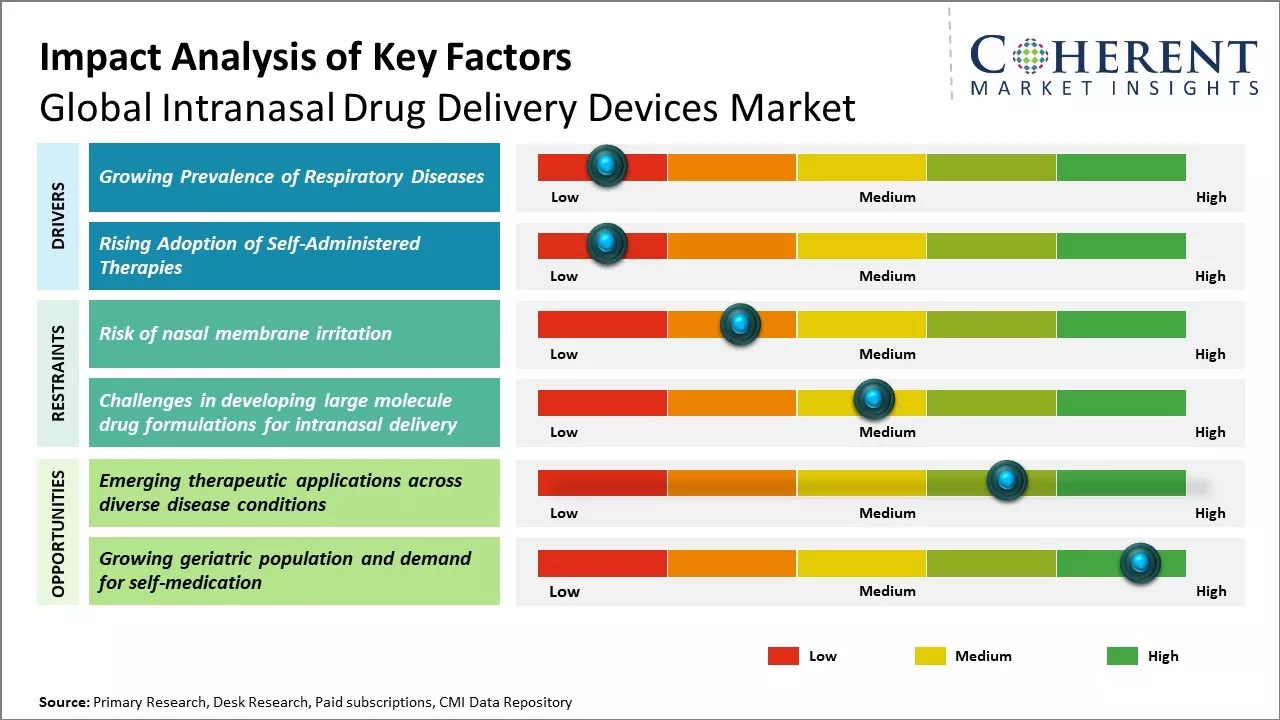Global intranasal drug delivery devices market is estimated to be valued at USD 1.87 Bn in 2025 and is expected to reach USD 3.65 Bn by 2032, exhibiting a compound annual growth rate (CAGR) of 10.0% from 2025 to 2032.

To learn more about this report, Request sample copy
Global intranasal drug delivery devices market growth is driven by rising prevalence of chronic diseases such as asthma and COPD, where intranasal drug delivery proves to be an effective mode of administration. Intranasal delivery allows for direct nose-to-brain drug delivery, which is beneficial for drugs targeting central nervous system conditions like migraine, Alzheimer's, depression, and others. This reduces the quantity of drugs required and provides quick relief and onset of action. Technological advancements leads to development of advanced and user-friendly intranasal spray delivery devices that increases consumer interest and adoption. Growing preference for needle-free drug delivery modes can also boost demand for these devices.
Growing Prevalence of Respiratory Diseases
Growing prevalence of respiratory diseases across the world can drive the global intranasal drug delivery devices market growth. According to the data from WHO, respiratory diseases such as asthma, chronic obstructive pulmonary disease (COPD) and upper respiratory tract infections are among the top ten causes of death globally. In 2020, al 3.83 million people died due to COPD, and COPD is projected to be the third leading cause of death worldwide by 2030. Increasing air pollution levels, aging population, and smoking rates contributes to rising cases of respiratory illnesses. Intranasal drug delivery provides direct access to the systemic circulation bypassing first-pass metabolism through an extensive blood vessel network in the nasal cavity. This speeds up drug absorption and provides faster therapeutic action, thus, making intranasal medications an attractive alternative for respiratory diseases. Compared to oral medications, intranasal inhalers and sprays also ensure better patient compliance and safety especially for chronic respiratory conditions which require frequent and long-term medication use. The non-invasive nature of intranasal delivery also improves access and accessibility to medications for vulnerable patient groups such as children, elderly and critically ill patients. For instance, in November 2023, since mid-October 2023, the World Health Organization (WHO) had been monitoring an uptick in respiratory illnesses among children in northern China. The Chinese National Health Commission reported a nationwide increase in respiratory diseases due to easing of COVID-19 restrictions and the onset of colder weather, leading to higher circulation of known pathogens like influenza, Mycoplasma pneumoniae, respiratory syncytial virus (RSV), and SARS-CoV-2. WHO requested additional data from China following reports of undiagnosed pneumonia clusters in children's hospitals in Beijing and Liaoning. Chinese health authorities confirmed increased cases of Mycoplasma pneumoniae since May and RSV, adenovirus, and influenza virus since October, attributing the rise to enhanced surveillance rather than novel pathogens or unusual clinical presentations.
Joining thousands of companies around the world committed to making the Excellent Business Solutions.
View All Our Clients